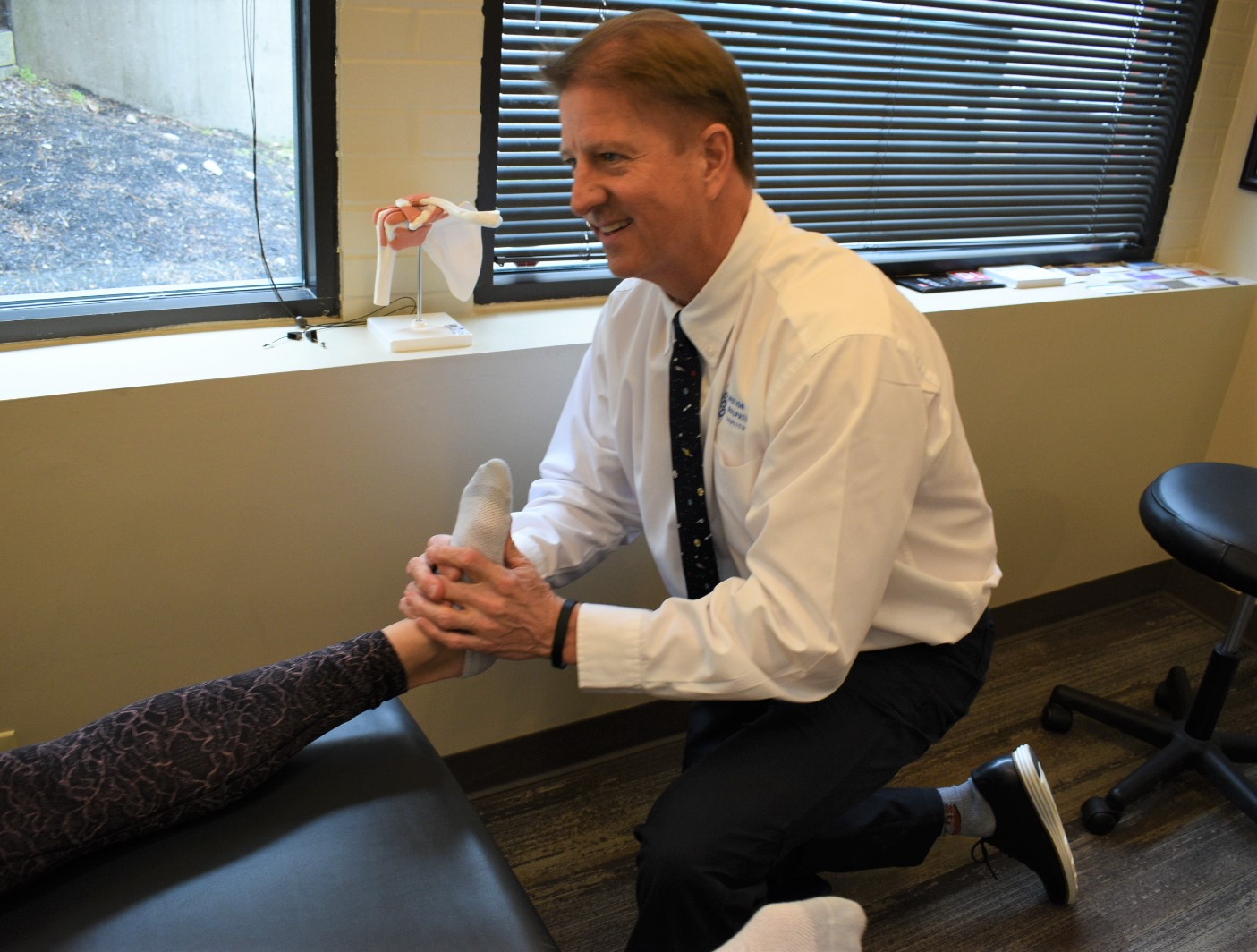 Not all foot pain and not all heel pain is plantar fasciitis. What is plantar fasciitis? The plantar fascia is a strong band from the medial portion of the bottom of the heel to the base of the great toe. When this fascia has increased force, it often results in inflammation. Simply, when this structure is inflamed, causing pain, we then give it the name plantar fasciitis.
Not all foot pain and not all heel pain is plantar fasciitis. What is plantar fasciitis? The plantar fascia is a strong band from the medial portion of the bottom of the heel to the base of the great toe. When this fascia has increased force, it often results in inflammation. Simply, when this structure is inflamed, causing pain, we then give it the name plantar fasciitis.
The plantar fascia is meant to impose force that is necessary to maintain the arch of the foot and create stability by interlocking the small bones in the foot. The plantar fascia does not work alone to do these things. It has partners in crime (smaller foot musculature) that it works with. Weakness in these smaller foot muscles increases the strain placed on the plantar fascia.
Signs that the foot is weak:
- Overpronation: All feet pronate. Pronation is a natural motion in the gait cycle, but does the medial longitudinal arch collapse (inside of the foot) and does the foot overpronate?
- Poor toe differentiation: Are you able to spread your toes? Are you able to keep your big toe on the ground while lifting your little toes?
- Can you squat while keeping your entire foot to the ground? Are you able to squat without clenching your toes to the ground? Can you maintain an even load on the foot?
What do you do if you think you have plantar fasciitis?
First, GET EVALUATED.
The first step is to get an accurate diagnosis. Not all foot pain is plantar fascia pain. There are many structures in and around the foot that may be causing your pain. Even your low back can drive your foot pain!
Now you’ve determined that it is, in fact, plantar fasciitis, what is your next step?
The answer is a treatment plan.
Your plan should consist of the following:
- Adjustments or mobilizations where they are appropriate.
- Dry needling to help speed the healing of the tissue.
- Avoiding hard surfaces barefoot (this is temporary)
- Orthotic evaluation. Depending on the activity, an orthotic may be a good temporary solution. If you have been wearing the same orthotics for years, it’s time to lose them and get that foot stronger.
- Exercise and move the foot! A few exercises that are commonly given at Mt. Lookout Chiropractic and Sports injury for Plantar Fasciitis:
- Toe mobilization
- Eccentric calf raises- eccentric loads strengthen and lengthen tendinous structures
- Foot activation and toe pro exercises- to help strengthen the small intrinsic foot muscles
- RDL’s with a focus on foot position- this exercise puts it all together. An RDL challenges core control as well as the intrinsic foot musculature under an eccentric load.
Exercises are often made specifically for each individual through modifications. As we said before, it is always important to make sure that you have the right diagnosis when dealing with foot pain. You can always trust the chiropractors and PTs at Mt. Lookout Chiropractic with sports injuries.
If you are dealing with foot pain, call Mt. Lookout Chiropractic for an evaluation.
-Written by Jessica Kowalski, DC
For more information on specific foot exercises, find us on YouTube and Instagram.







You must be logged in to post a comment.